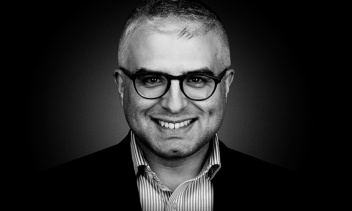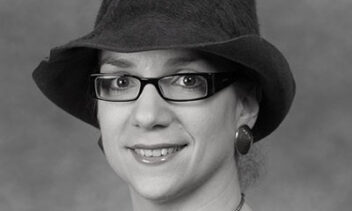From my perspective as an educator, the purpose of formal Jewish education is to help a child become a Jew. I say “help” because much of a child’s Jewish identity is formed in the home. Jewish schools remain a necessity, though, because the lion’s share of our children’s waking hours is spent there. Even were that not the case, most parents lack the time and specialized skills necessary to teach children what they need to know.
Becoming a full-fledged Jewish adult turns out to be a complex process. Children need to internalize a commitment to God, Torah, and halacha, while acquiring a Jewish selfhood sturdy enough to take them through the vicissitudes of life and enable them to pass the tradition forward. Since we want them to embrace Judaism with love, it cannot be imposed through indoctrination; an authentic Jewish life must be freely chosen.
These have always been difficult goals to achieve, and in the current cultural moment, they sometimes seem impossible. Many of the problems our educational systems face are not our fault, nor are they unique to the Jewish world. Educators worldwide struggle with the consequences of falling attention spans, the endless distractions churned out by social media and the entertainment industry, shallow thinking, and an aversion to commitment. As Jews, we also have to contend with a cultural climate hostile to Jewish values, and a terrifying increase in antisemitism. That said, we can’t afford to make excuses for the quality of Jewish education in America today. We need to fix it.
Since moving to Israel over 40 years ago, I’ve been privileged to teach in post-high school and gap-year Israel programs across the Orthodox Jewish spectrum. Over the last 20 years or so, many educators in these programs, myself included, have been perturbed by the deterioration in our students’ skill levels and Jewish knowledge base. There was a time when I could ask questions like “How does Seforno’s understanding of this verse differ from Ramban’s?” and students would answer by reading and explaining the sources in Hebrew. I could mention the split of the kingdom in a class on Hosea and assume that my students would understand the reference and its relevance to the subject at hand. Unfortunately, that is no longer the case. Another contemporary example of how standards have fallen is the near-universal use of the Artscroll siddur for daily prayer. Without it, our students don’t understand what they are saying. Most also have difficulty with the mechanics of reading biblical Hebrew and struggle enormously with text comprehension. No wonder, then, that so many of our students find their Torah classes uninspiring.
Some students lack basic skills because they have received little or no formal Jewish schooling, or because of personal learning difficulties. The majority of students, though, come from committed Jewish homes with dedicated parents (a significant proportion of whom did not receive Jewish educations themselves) who have sacrificed a great deal to provide them with 12 years of very expensive Jewish schooling. Obviously, something has gone wrong. To begin addressing these problems, we need to re-examine Jewish education and think strategically about how to attain our educational goals.
We know from Jewish history that Judaism can be transmitted under the most adverse conditions. To survive as Jews in a society so antagonistic to Judaism, we need to do what Jews have always done—create an alternative space for ourselves, a counterculture that repudiates the negative aspects of the prevailing culture while providing a world within which Jewish identities can be fully expressed.
Some find that alternative space by withdrawing from the non-Jewish world as completely as possible. For those who reject separatism, there is another solution, one that requires a serious investment of time, strategic thinking, and money from both families and the community at large: Teach our children how to live biculturally, to negotiate a successful path through “the outside world” while living their richest, most meaningful lives in their true home, the Jewish world.
Language and Identity
Effective Jewish schooling is critical to creating this alternative environment. The most important skill schools must teach is how to pray and study sacred texts in their original Hebrew. Sadly, many schools seem to have given up on this. I believe that the surrender to teaching in translation is a catastrophic educational mistake.
Languages communicate so much more than information. They carry not only the meanings of words but also deep emotional associations that go beyond the purely semantic. The nuances of a language convey the values of the culture it represents. In these and other subtle ways, languages are not merely neutral vehicles for expression. That’s why translation from one language to another is always an approximation of the original meaning—in effect, a falsification.
A shared Jewish language is key to creating a meaningful alternative space for our students because language confers identity on its speakers—a personal space in a common heritage with other speakers of the same language—while distinguishing speakers from non-speakers. A native language is a home that speakers take wherever they go. Historically, the fact that Jews everywhere prayed in the same language created a bond like no other between far-flung communities; it is one of the markers of uniqueness which has kept us a people “that dwells alone,” going back as far as Egypt.
While Modern Hebrew is not the Holy Tongue, it carries the resonances of biblical Hebrew and preserves much of its transformative power. In a remarkable letter to Franz Rosenzweig, Gershom Scholem, meditating on the revival of the Hebrew language by secularists, wrote:
That sacred language on which we nurture our children, is it not an abyss that must open up one day? The people certainly don’t know what they are doing. They think that they have secularized the Hebrew language…But that of course is not true…It is impossible to empty the words so bursting with meaning, unless one sacrifices the language itself…Shall not the religious power of that language explode one day?…A generation that takes over the most fruitful part of our tradition—its language—cannot, though it may ardently wish to, live without tradition….
It has taken some time, but Israeli culture today testifies to the fulfillment of Scholem’s prediction. Hebrew has taken its benevolent revenge against those who thought they could suppress the religious and spiritual effects of a language saturated with godliness. Many Israelis have grown closer to their Jewish heritage in recent years, some almost against their will. As native speakers of the language of the Jews, they can embrace Judaism, wrestle with it, study it, weave it into art and music, and celebrate its traditions in ways great and small.
Believing Jews have always known that the language with which God created the world is sacred and has enormous spiritual power. The very utterance of God’s name in Hebrew and the study of His Torah in His language has a transformative effect that goes beyond our cognitive faculties to our souls. Praying and studying Torah in the Holy Tongue creates worlds. The gift of this language is our children’s birthright. We must not withhold it from them.
With Work, Comes Love
Beyond even that, though, the ability to read Hebrew is the only real gateway to the world of talmud Torah (Torah study), the Jewish people’s life and soul. Authentic Torah study is not possible in translation. One may read Torah, the Prophets, Scripture, Mishna, Talmud, Midrash, biblical commentary, halachic works, and Jewish thought in translation, but these texts can be studied only in the original. That’s because the nuances which give rise to meaning are lost in translation. How can we grasp Rashi’s question on a biblical verse where the translation has smoothed out the grammatical anomaly on which it is based? How can we understand the crux of a halachic dispute based on an ambiguous word if the translator has disambiguated it?
At their best, Jewish schools are the place where our children earn their place as links in the chain of transmission. They are taught the purpose of Torah study—to learn how to fulfill God’s will as revealed in His Torah. They are trained to use the tools of Torah study—intellectual honesty, close reading skills, and the art of asking good questions. They are initiated into the process of Torah study—the work of figuring it out—which is what transforms us. As we work on the text in order to understand it, we take possession of it and it becomes ours. When it becomes ours, we come to love it, and our love for it obligates us to live up to it. Talmud Torah comes with a joy that is simultaneously intellectual, aesthetic, and spiritual. We understand, we perceive the beauty, and we feel love.
Thinking about the labor of Torah and how it repays us with hard-earned joy may help us understand why teaching in translation was such a terrible educational misstep. The assumption was that making Jewish subjects less demanding would make them more attractive to students. Instead, by removing the challenges involved in any meaningful learning—and the satisfaction that comes from really accomplishing something—Jewish educational institutions made the study of Jewish subjects insipid and unsatisfying. Worse, in doing so, they collapsed the distinction between the surface glitter of “the outside world” and the meaningful alternative space that provides deeper satisfactions and values to live by.
Reversing Course
It’s not too late to reverse course. If there’s a will (and some good strategic planning, and a few forward-thinking philanthropists who are willing to fund good projects), there’s a way.
Many Jewish schools in America, including those of non-Orthodox denominations, used to teach Hebrew language skills and teach them well. Those programs and curricula can be evaluated, dusted off, updated, and implemented where they belong. If they are deemed outdated, inappropriate, or ineffective, there are talented language specialists out there who can come up with something better.
Every educational system can benefit from better teacher training programs and professional development for in-service teachers. Perhaps it is time that the Orthodox Jewish educational systems and their non-Orthodox counterparts re-evaluate their training programs for new teachers and professional support for working teachers. The idealistic, hardworking teachers I meet care about their students’ spiritual and psychological welfare. They are passionate about becoming the best teachers they can be. They want to teach Torah in a deep, intellectually honest and religiously meaningful way. They are well worth investing in. After all, our children deserve no less than the best.
Simi Peters is the author of Learning to Read Midrash (Urim Publications) and teaches Tanach, Midrash, and Parshanut at Nishmat and Matan in Jerusalem, as well as teaching students and teachers outside Israel online. She has been involved in teacher education for many years. Simi has more job satisfaction than anyone she knows.









